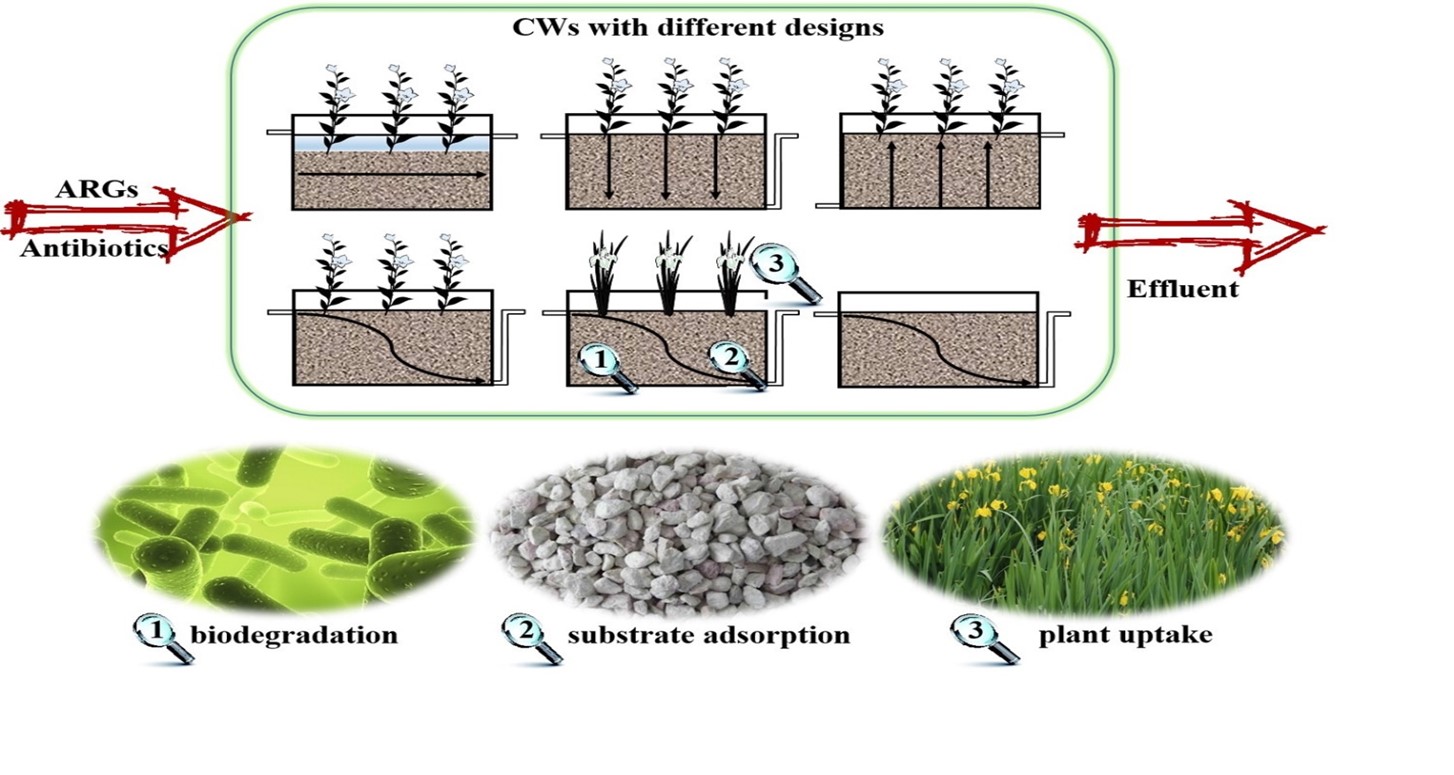
Contamination in water bodies with antibiotics and resistance genes is becoming an increasing threat to global health. Overuse of antibiotics has become a serious ecological problem worldwide. There is growing concern that antibiotics are losing their effectiveness due to increased antibiotic resistance in bacteria. During the last twenty years, the consumption of antibiotics has increased rapidly, which has been cited as one of the world’s worst abusers of antibiotics. Several studies have been conducted to solve this issue. Developed countries have introduced several methods but constructed wetlands have been found low cost technology. Although constructed wetlands (CWs) offer a potential way to remove these antibiotics from water supplies, knowledge of their mechanisms is limited. In this review, we highlight important aspects of antibiotic pollution in waters, the removal efficiency of constructed wetlands for antibiotic removal and that antibiotic pollution affects many things which taken together poses several challenges for environmental scientists. It has been discovered that four main factors are affecting the performance of constructed wetlands used for the treatment of antibiotics in water supplies, the types configurations of constructed wetlands, hydraulic load rates, substrates, plants, and microorganisms. Further researches focusing on these factors are recommended to improve the removal efficiency of antibiotics in constructed wetlands. Outcomes of the study could help wastewater treatment plant engineers with providing reliable design data and outline a road map for future researches.
Total file downloads: 27